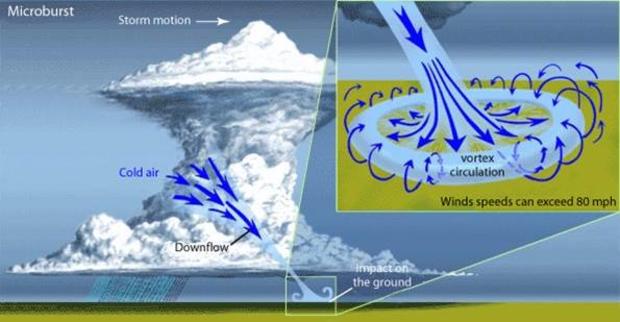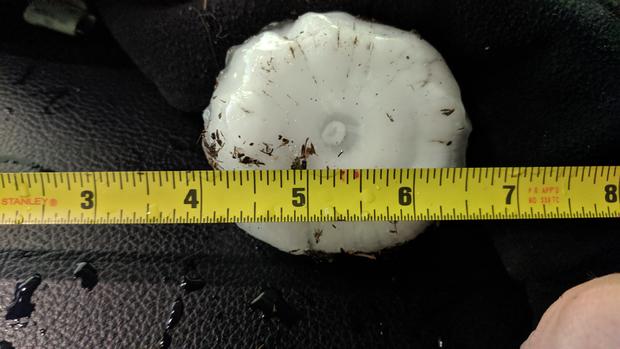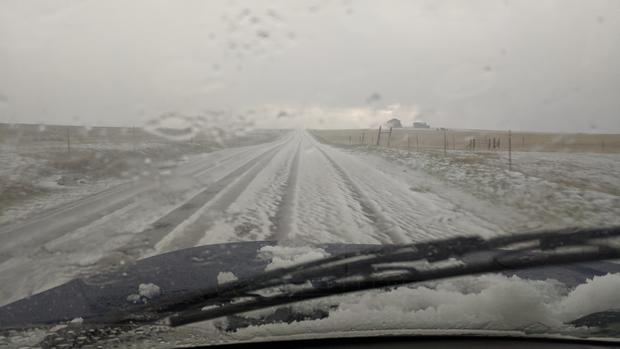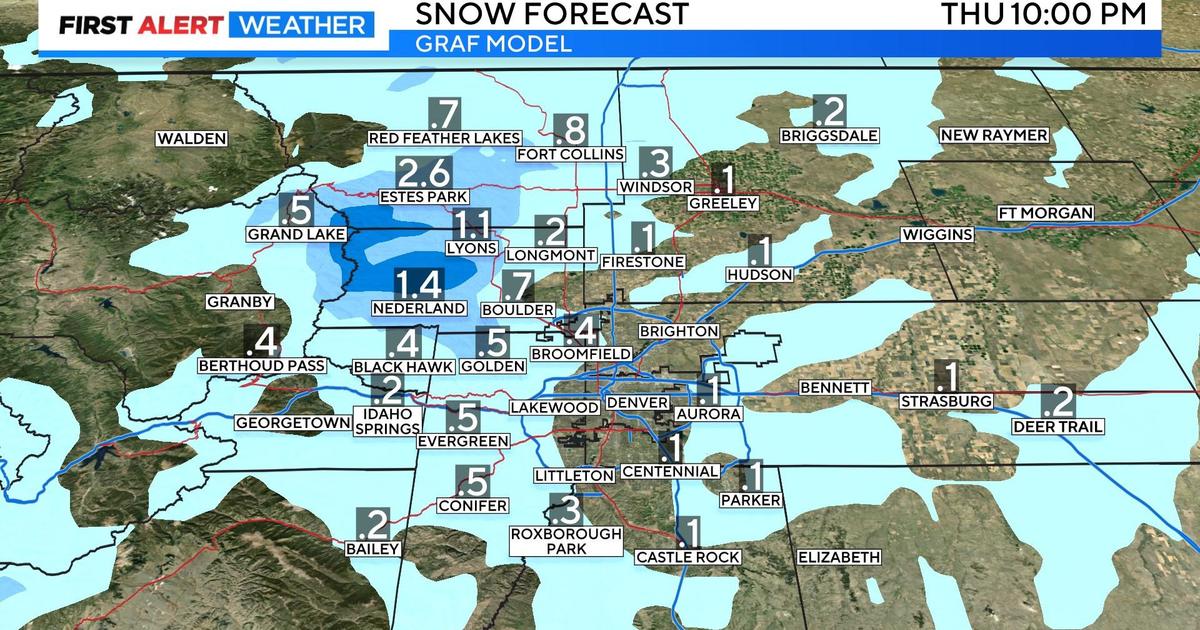Colorado Severe Weather Awareness Week: Damaging Wind And Destructive Hail
DENVER (CBS4) - When severe storms strike Colorado they bring the potential to see damaging wind and large hail. Powerful straight-line winds produced by microbursts can sometimes accompany thunderstorms producing damage similar to a tornado.
Because the air near the ground in Colorado is often very dry we see thunderstorms develop with a cloud base several thousand feet off the ground. This creates the perfect setup for a microburst.
As the storm produces rain it falls into the dry air and evaporates. The evaporation process cools the air below the cloud. That colder pocket of air is heavier than the surrounding air so it rushes toward the ground. When the air hits the ground it spreads out in all directions creating the microburst. Depending on how much moisture is in the air the microburst can be described as wet or dry.
If the area impacted is less than 2.5 miles across the wind is called a microburst. If the area is larger we call it a macroburst. In extreme cases the wind from a micro or macroburst can exceed 100 mph. You may also hear this weather phenomenon referred to as a downburst.
Microbursts and macrobursts can present a great danger to pilots and can cause extensive damage, injuries and even death on the ground. This is why it is important to seek shelter during any thunderstorm, regardless of a warning being issued or not. High winds can move things on the ground and create flying projectiles that could injure or kill.
Hail is another big hazard during Colorado's severe weather season. It forms as strong updrafts feed a severe thunderstorm, allowing hail to form and stay suspended inside a cloud. The longer it stays suspended the larger it can grow. When the stone becomes heavier than the updraft keeping it suspended it will fall to the ground.
Hailstones can vary in size from around 3/8 of an inch in diameter to larger than a softball. The biggest hailstone ever documented in Colorado was 4.83 inches in diameter and was almost 13 inches in circumference.
Hail can cause tremendous damage to homes, vehicles, buildings and crops. Large stones can injure and in extreme cases kill people or animals. The National Weather Service will issue a Severe Thunderstorm Warning if a storm has the potential to produce hail that is 1 inch in diameter or larger.
Sometimes a thunderstorm can produce so much hail that it accumulates on roadways like snow, presenting a major driving hazard. When this happens the Colorado Department of Transportation will sometimes have to send plows out to remove the hail.








